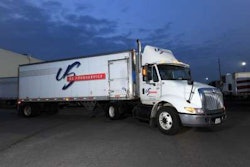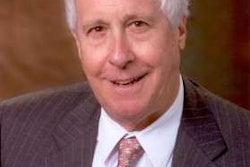Navistar on Friday, July 10, announced that it has created three regional Engine Group business units to better focus on its expanding customer base around the world. The company also announced today, July 13, that it is on track with its 2010 engine testing and will be prepared for a launch in the months ahead.
Engine Group units
The three Engine Group units – North America, South America and Global – will be led by a team of Navistar veterans:
Eric Tech becomes president, Navistar Engine Group, from vice president and general manager;
Andy Dondlinger becomes vice president and general manager of North American business operations, from general manager of vee and inline business units;
Waldey Sanchez continues as president and chief executive officer of Navistar’s South American engine operation, MWM-International;
Jose Eduardo Luzzi, formerly director of sales and marketing for MWM-International, becomes vice president and general manager of Navistar’s Global Operations;
David LaPalomento becomes vice president of Global Integration, from vice president of worldwide sales and marketing; and
Jim Jesionowski becomes director of Global Manufacturing Engineering and Quality.
The new business unit leaders report directly to Tech. “This is a significant next step in achieving our vision to transform Navistar Engine Group into a thriving global business that will provide clean diesel solutions wherever there’s a need for power,” he says.
Navistar says the reorganization supports a number of strategic business goals:
Ensure the continued delivery of MaxxForce brand engines to the North American on-highway marketplace, including MaxxForce advanced exhaust gas recirculation emissions technology for 2010 and beyond;
Grow in other automotive and industrial segments in North American Free Trade Agreement countries;
Partner with new OEM customers in established and emerging markets under Euro emissions regulations;
Create a global platform for continuous improvement in product quality, performance and fuel efficiency;
Develop common quality and manufacturing processes across its multinational engine operations and joint ventures; and
Support Navistar Global Truck Group and Navistar Global Bus division in non-NAFTA growth areas.
“Our growth has given Navistar Engine Group the scale to realize big competitive advantages on the global stage, including broader supply base choices, recruitment of top industry talent, competitive cost structure and more depth in technical expertise and facilities,” Tech says. “This all fuels our ability to deliver great products for a growing number of customers that value low emissions as well as capability, performance, reliability and durability.”
Navistar currently operates five engine manufacturing plants around the world. It produces inline six-cylinder diesels in Melrose Park, Ill.; V8 and V6 turbodiesels and 11- and 13-liter “big bore” engines in Huntsville, Ala.; inline four- and six-cylinder diesels in Santo Amaro, Sao Paulo, Brazil; engine components in Jesus Maria, Cordoba, Argentina; and inline four- and six-cylinder diesels in Canoas, Rio Grande do Sul, Brazil. The South American facilities operate as MWM-International Industria de Motores da America do Sul Ltda., a wholly owned subsidiary of Navistar.
As a part of a joint venture with Mahindra & Mahindra, Navistar also is building a plant in India that soon will begin production of diesel engines for commercial, consumer and off-highway vehicles. Additionally, Dong Feng, an automotive manufacturer in China, has licensed a Navistar diesel engine design for use in commercial trucks in the Far East. And Navistar recently signed an agreement to develop diesel engines for Daewoo brand buses in Korea.
2010 engines
Navistar says it is continuing on its path to meet the latest emissions requirements through its Advanced EGR (exhaust gas recirculation) MaxxForce engines. “We are on track with our strategy of 2010 emissions compliance through the use of our EGR-only solution and are ahead of schedule in some cases,” says Jack Allen, president of Navistar’s North American truck group.
Navistar says it has completed rigorous testing and analysis in both its engine labs and field test units during the last 18 months. This past March, Navistar says that it completed its final stages of cold weather testing this past March in northern Minnesota.
“As we reach the final stages of our testing and validation processes, we’re excited about our progress in bringing to market some of the cleanest and most energy-efficient diesel engines ever produced,” says Ramin Younessi, group vice president of product development and business strategy. “Completing the validation phase of our test engines is a major milestone, but our work isn’t done yet. As with any new engine program, up until the day we build that first truck, we will continue to fine-tune our engines, make the necessary adjustments, test and validate to ensure our customers have the performance and reliability they expect.”
Navistar says the final validation testing at high altitude and high temperature is being conducted in Nevada and the mountainous regions of Colorado, and that its engineers currently are completing the final evaluation of engine performance in high elevations with aggressive inclines and declines. Navistar says its engineers will travel to desert-like conditions in Arizona and Nevada to complete its 2010 hot-weather testing. Navistar says it has more than 60 test vehicles in operation today, logging thousands of miles each and every week; as testing and validation is finalized in preparation for launch, these 2010 test vehicles will have logged millions of driving miles in real-world conditions.
Navistar says it has been conducting extensive training sessions with customers and dealers since January, explaining the differences between EGR and selective catalytic reduction (SCR) technology as well as the benefits from Navistar’s early introduction of lower NOx technologies for the environment and our customers.











